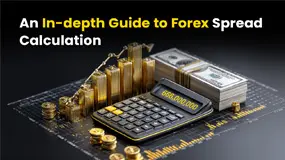简体中文
繁體中文
English
Pусский
日本語
ภาษาไทย
Tiếng Việt
Bahasa Indonesia
Español
हिन्दी
Filippiiniläinen
Français
Deutsch
Português
Türkçe
한국어
العربية
Reveal the true cost of forex trading fees
Abstract:Potential profits and market opportunities are usually the most focused factors for traders in the forex market. This article focuses on explaining how small fees add up over time and affect profitability.

Potential profits and market opportunities are usually the most focused factors for traders in the forex market. This article focuses on explaining how small fees add up over time and affect profitability.
Breaking Down Forex Trading Fees
Forex brokers typically earn money through several spreads, commissions, swap fees, and additional fees.
Spreads: The difference between the bid and ask price of a currency pair.
Commissions: A fixed fee per lot traded, usually in ECN or low-spread accounts.
Overnight/Swap Fees: Charged when positions are held overnight.
Additional Fees: Including withdrawal charges, inactivity fees, or currency conversion costs.
How Fees Add Up in Practice: Example in Reality
If a trader decided to invest in Exness, Exness offers tight spreads as low as 0.1 pips on EUR/USD in its Raw Spread account, but charges a commission of $7 per lot. A scalper executing 50 trades in a month (1 lot each) would pay:
- $7 x 50 trades = $350 in commissions alone.
- If spreads average 0.1 pips, that adds roughly another $50.
- Total monthly cost: $400, excluding swaps.
At first glance, commission-based accounts may seem expensive, but depending on your trading style, they can save you money over time.
The Hidden Impact of Overnight Fees
For swing traders, overnight swaps can become a silent cost. For example, a forex broker charges positive or negative swaps depending on interest rate differentials. Holding a standard 1-lot EUR/USD trade for 10 nights could cost around $40–$60 in swaps, depending on market conditions. This may not seem much, but compounded over a year, it adds hundreds of dollars.
How Fees Affect Profitability
Imagine a trader generates an average monthly profit of $1,500. If trading fees account for $400–$700 of costs, thats 27–47% of profits lost to fees. Over a year, this could mean thousands of dollars in reduced net returns.
Particularly, High-frequency traders, though less affected by spreads, cannot ignore swaps and hidden costs.
Minimizing Forex Trading Costs
- Choose the Right Broker for Your Strategy – WikiFX offers a good way for traders to choose a suitable broker. Traders may benefit from low-spread, commission-based brokers, as WikiFX offers broker details.
- Compare Swap Rates – Especially for swing or position trading.
- Watch for Hidden Fees – Withdrawal charges and currency conversions can reduce net gains.
Conclusion
The true cost of forex trading fees is important because it contains some small fees that you may ignore initially. What seems like a fraction of a pip or a minor overnight charge can accumulate into thousands over time. Traders who want to maximize profitability must go beyond headline spreads and compare the all-in costs across brokers.
By revealing and understanding these hidden costs, traders can make informed choices, align with the right broker, and ultimately keep more of their profits.

Disclaimer:
The views in this article only represent the author's personal views, and do not constitute investment advice on this platform. This platform does not guarantee the accuracy, completeness and timeliness of the information in the article, and will not be liable for any loss caused by the use of or reliance on the information in the article.
Read more

Plus500 Launches $90 Million Share Buyback Programme
Plus500 has officially launched a $90 million share buyback programme. The initiative forms part of the company’s wider plan to distribute $165 million to investors.

SimpleFX Scam Alert: Here’s Why You Should it?
There are numerous forex brokers available in the market. You are free to choose the one that suits your needs, but you must stay alert while making your choice. SimplyFX is one of these brokers. Read this article to understand why we are calling it a scam broker.

An In-depth Guide to Forex Spread Calculation
While the calculation of the forex spread (the difference between the exchange rate at which a forex broker buys and sells the currency) is simple, yet some of us are left confused. To make it clear, we have come up with calculation and realistic examples to make you understand it better. Read on!

Fraud Alert: FCA Warns Against 10 Unlicensed Brokers
The Financial Conduct Authority (FCA) issued a warning against ten unregulated brokers to raise public awareness and issue a scam alert. This is because the number of scam brokers is increasing in the forex market. You need to be informed when investing in the forex market.
WikiFX Broker
Latest News
European leaders to join Zelensky at White House meeting with Trump
Where is ThinkMarkets Broker Licensed to Operate?
Trader in Thane Duped of ₹4.11 Cr in Online Scam
BlackBull Markets and CopyTrade Market Formalise Integration
IG Japan Ends Discount Program on Aug 17
Plus500 Launches $90 Million Share Buyback Programme
Strongest Level for MYR Coming Soon?!
Fraud Alert: FCA Warns Against 10 Unlicensed Brokers
An In-depth Guide to Forex Spread Calculation
IG Securities' “Introductory Programme” Comes to an End!
Currency Calculator


